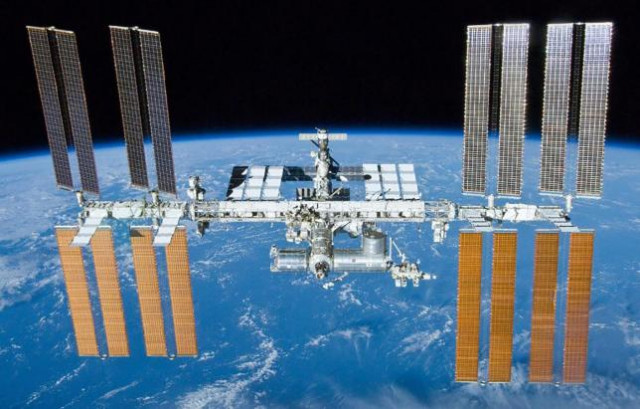China to launch 'core module' for space station around 2018
China has been moving to develop its space program for military, commercial and scientific purposes

PHOTO: REUTERS
Advancing China's space program is a priority for Beijing, with President Xi Jinping calling for the country to establish itself as a space power.
‘CPEC a game changer only if Pakistan tackles security issues’
China insists its space program is for peaceful purposes, but the U.S. Defense Department has highlighted its increasing space capabilities, saying it was pursuing activities aimed to prevent adversaries from using space-based assets in a crisis.
The "core module" for the space station will be called the "Tianhe-1", the Chinese word for galaxy or Milky Way, Wang Zhongyang, spokesman for the China Aerospace Science and Technology Corp, told Xinhua.
"Two space labs will be launched later and dock with the core module, 'Tianhe-1,'" he said. "The construction of the space station is expected to finish in 2022."
Wang added, "If the International Space Station, which has extended its service, is retired by 2024, China's new space station will be the only operational one in outer space."
Pluto’s largest moon likely fractured by sub-surface ocean: NASA
In a manned space mission in 2013, three Chinese astronauts spent 15 days in orbit and docked with an experimental space laboratory, the Tiangong (Heavenly Palace) 1.
This year, China will launch the Tiangong 2 and Shenzhou 11 spacecraft, which will carry two astronauts and dock with Tiangong 2, Xinhua added.
Next year, China's first cargo ship, Tianzhou 1, will attempt to dock with Tiangong 2, it said.
China also plans a space telescope similar to the Hubble Space Telescope, which will "be on a separate space unit and share orbit alongside the space station," Wang added.
China has been moving to develop its space program for military, commercial and scientific purposes, but is still playing catch-up to established space powers the United States and Russia.
China's Jade Rabbit moon rover landed on the moon in late 2013 to great national fanfare, but soon began experiencing severe technical difficulties.
The Jade Rabbit and the Chang'e 3 probe that carried it there marked the first "soft landing" on the moon since 1976. Both the United States and the Soviet Union had accomplished the feat earlier.
Mars robot launch now scheduled for May 2018: NASA
China has tested anti-satellite missiles and in May 2013, China also launched an object into space on a ballistic trajectory with a peak altitude of over 30,000 km (18,641 miles), putting it near geosynchronous orbit, where many nations have communications and earth-sensing satellites.



















COMMENTS
Comments are moderated and generally will be posted if they are on-topic and not abusive.
For more information, please see our Comments FAQ